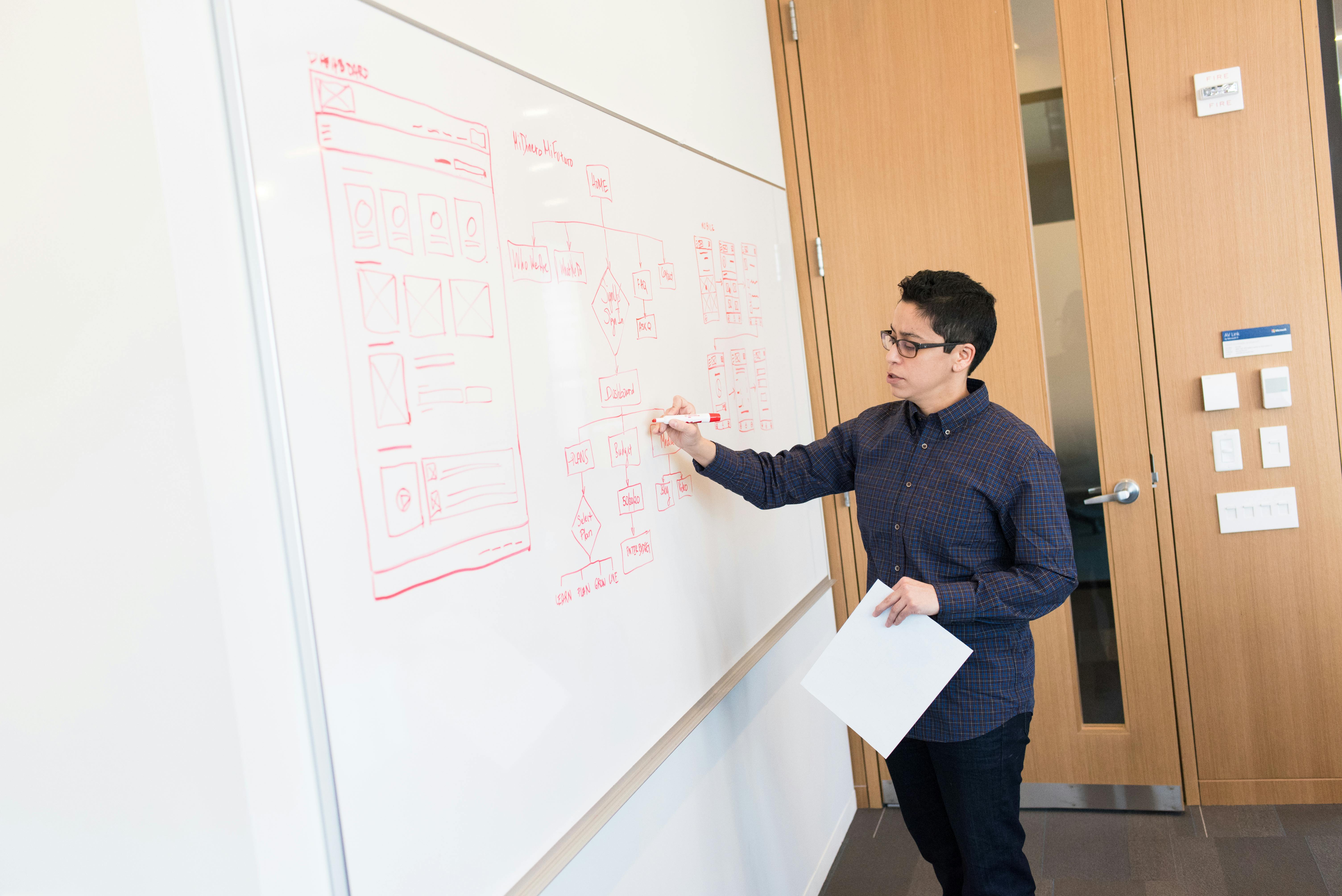How Cloud-Based Software Became the Engine of Modern Work
Imagine waking up, grabbing your coffee, and joining a meeting with colleagues across five time zones — all without stepping into an office. That’s not the future; that’s 2025. The way we work has changed forever, and at the heart of it all lies one simple shift: cloud-based productivity software.
Five years ago, remote work was a temporary solution. Today, it’s the foundation of the global economy. Companies that once spent millions maintaining local servers and physical offices now run entirely on digital collaboration tools like Google Workspace, Notion AI, ClickUp, and Microsoft 365. The cloud didn’t just make work easier — it made it borderless.

The Digital Revolution That Started Quietly
Back in the early 2010s, when Google Docs first allowed real-time editing, few realized they were witnessing a revolution. It began as convenience — a way to share files without email attachments. But as AI, automation, and global connectivity evolved, this simple convenience turned into an unstoppable movement that redefined productivity itself.
By 2025, over 88% of American companies use at least one major cloud productivity suite. What’s more, 72% of small businesses report saving money by moving entirely to cloud tools. But the real magic isn’t in the savings — it’s in the flexibility. A designer in Los Angeles can co-edit a presentation with a marketer in London, while a manager in Dubai reviews progress live. That’s efficiency redefined.
“We stopped thinking about ‘where’ we work — and started focusing on ‘how well’ we work.” — Alicia Torres, COO at RemoteOps
The Titans of the Cloud: Who’s Leading the 2025 Revolution?
Three giants dominate the digital workspace landscape — each representing a different philosophy of productivity.
1. Google Workspace: Built for Collaboration
Google’s suite remains the undisputed king of simplicity. From Gmail to Sheets to Meet, it’s all about removing friction. In 2025, Google introduced Smart Canvas, an AI layer that automatically summarizes meetings, tracks tasks, and suggests deadlines. It doesn’t just assist — it anticipates.

2. Microsoft 365: The Corporate Powerhouse
Microsoft has taken enterprise productivity to another level. Its AI-driven Copilot in Excel and Word can now generate quarterly reports or legal documents instantly. For large organizations, integration is everything — and Microsoft nails it with Teams, Power BI, and Azure Cloud working in harmony.
With advanced encryption, compliance systems, and cross-department integration, it’s no surprise that 90% of Fortune 500 companies still run on Microsoft 365. It’s not flashy, but it’s the most secure ecosystem for enterprise-grade collaboration.
3. Notion AI: Creativity Meets Intelligence
If Google is collaboration and Microsoft is power, Notion AI is freedom. It’s the platform for builders — creators who want their workspace to adapt to them, not the other way around. Its AI now builds entire project dashboards, summarizes company data, and drafts emails that sound uniquely human.

Startups love it. Freelancers swear by it. And in 2025, it’s becoming the go-to tool for digital entrepreneurs who need flexibility, not formality. Notion’s community-driven templates make every workspace unique — no two setups are ever the same.
Bonus: The Unexpected Hero — ClickUp
While Google, Microsoft, and Notion dominate headlines, ClickUp has quietly become the productivity app for high-performing teams. Its AI automations assign tasks based on workload, while dashboards visualize company OKRs in real time. ClickUp doesn’t just organize — it optimizes.

By 2025, efficiency isn’t about working harder — it’s about building smarter systems. And the cloud is the invisible architect behind it all.
Why Cloud-Based Software Is Now the Backbone of Every Business
By 2025, cloud productivity software has become more than just a tool — it’s an ecosystem that keeps businesses alive. Startups, Fortune 500 companies, freelancers, and digital nomads all rely on the same invisible infrastructure: the cloud. It’s the quiet engine powering meetings, projects, and billion-dollar decisions.
One of the biggest reasons behind this massive shift is cost efficiency. Companies no longer need to invest in expensive on-site servers or software licenses. Instead, they subscribe to cloud platforms that automatically update, scale, and secure their operations in real time.

Data Is the New Electricity
Think of data as the electricity of modern business. Without it, nothing works. Cloud-based software doesn’t just store data; it connects it across tools. Sales teams see marketing analytics live. HR managers access finance dashboards instantly. The result? Speed, precision, and smarter decisions.
According to Gartner’s 2025 Digital Business Survey, companies using integrated cloud systems are 37% faster at decision-making and 42% more profitable than those still relying on local infrastructure.
“We don’t compete on time anymore. We compete on insight — and that insight comes from the cloud.” — Jeremy Holt, CTO at CloudMatrix Inc.
How Cloud Productivity Tools Empower Remote Teams
The biggest cultural impact of cloud-based productivity software is on remote collaboration. With digital offices replacing physical ones, companies had to reinvent how people work together — not just technically, but psychologically.
1. Collaboration Without Boundaries
Cloud tools like Slack, Asana, and Zoom have turned physical distance into a non-issue. Employees now brainstorm on shared digital whiteboards, assign tasks through automation, and get AI-generated meeting summaries before they even wake up.

2. Real-Time Performance Tracking
Gone are the days when managers waited for weekly reports. In 2025, every dashboard updates live. Cloud software like ClickUp AI and Monday.com automatically track KPIs, visualize project progress, and highlight bottlenecks — all without manual input.
3. Work-Life Balance Through Flexibility
Cloud technology also gave rise to the hybrid lifestyle — working from anywhere, anytime. Employees spend more time with family, travel while staying productive, and report higher mental well-being. For employers, this flexibility means access to global talent without relocating teams.
Challenges That Still Remain
Despite all the innovation, the cloud revolution has its challenges. Security and data privacy remain top concerns. In 2025, global losses from cyberattacks reached $10.5 trillion. Companies now rely heavily on end-to-end encryption, zero-trust policies, and AI-based threat detection to stay safe.
Another major issue is tool fatigue. Many employees juggle too many apps at once — from task managers to CRMs to chat tools. Experts predict the next wave of innovation will be “super platforms” — unified ecosystems that blend all productivity tools under one smart interface.

What’s Next for Cloud Productivity in 2026?
The future points toward AI-driven automation and voice-first interfaces. Imagine saying: “Summarize my team’s progress this week” — and your cloud assistant instantly generates a visual report with deadlines and insights. That’s not a dream — that’s what companies like OpenAI, Microsoft, and Salesforce are already building.
Cloud-based software isn’t just a convenience anymore — it’s the foundation of modern civilization’s workflow. The way steam powered the industrial age, cloud platforms now power the digital age. Every file, meeting, and idea exists in the cloud — and that’s where the world’s future is being built.
The Economic Impact of Cloud Productivity Software
As businesses scale their digital operations, cloud software has become one of the most significant contributors to global economic growth. According to the World Digital Economy Report 2025, cloud-based tools now account for $1.2 trillion in global productivity gains — surpassing even the combined value of traditional IT infrastructure spending.
For small and medium-sized enterprises (SMEs), this shift is revolutionary. Instead of being outspent by industry giants, local businesses can now compete globally through access to affordable enterprise-grade tools hosted on the cloud.

Cost Savings and ROI
On average, companies using fully integrated cloud systems report a 47% reduction in software maintenance costs and a 31% increase in ROI within the first year of adoption. The ability to pay as you grow — rather than committing to multi-year license agreements — allows startups to stay lean and flexible.
Additionally, the rise of subscription-based platforms (SaaS) has redefined business budgeting. Instead of treating software as a one-time investment, companies now treat it as a continuous strategic partnership.
Empowering the Global Workforce
The accessibility of cloud platforms has also democratized opportunity. Skilled workers from developing nations now join global projects remotely. For the first time, geographic location doesn’t limit earning potential — a major step toward digital equality.
“Cloud tools don’t just make work easier; they make work fairer. Talent no longer depends on your ZIP code.” — Melissa Zhou, HR Director, GlobalWork Network
How Cloud-Based Tools Are Redefining Employment and Work Models
Before 2020, the concept of a remote-first company was experimental. By 2025, it’s mainstream. Major corporations like Microsoft, Shopify, and GitLab now operate on a hybrid or fully remote model — all powered by integrated cloud ecosystems.

1. The Rise of the Cloud Workforce
Freelancers, consultants, and digital creators are now forming what economists call the “Cloud Workforce.” These independent professionals rely on platforms like Google Workspace, Notion, and Trello to manage clients across continents.
By 2025, over 34% of the U.S. workforce earns income through cloud-based collaboration — either full-time or part-time. This shift is rewriting labor economics, creating new income streams, and dissolving the line between traditional employment and entrepreneurship.
2. Recruitment Through the Cloud
Even hiring has gone cloud-native. Companies now use AI-driven recruitment tools that analyze candidate data, portfolios, and live collaboration behavior. Instead of resumes, applicants showcase cloud dashboards of their completed projects.
Tools like Workable AI and Greenhouse Cloud integrate seamlessly with video conferencing apps, allowing recruiters to assess candidates’ problem-solving and communication skills in real time.
3. Cloud Governance and Legal Evolution
Governments and legal systems are still catching up with this new reality. Questions about data ownership, digital taxation, and remote work regulation are shaping international law in unprecedented ways.
The U.S. Federal Digital Workforce Act of 2025 introduced guidelines for cross-border virtual employment, ensuring fair taxation, cybersecurity, and insurance standards for remote professionals.

It’s clear that the workforce of tomorrow won’t be managed by offices — it will be managed by clouds. Those who adapt early are already experiencing the benefits: global reach, time freedom, and unstoppable scalability.
Case Studies: How Companies Are Winning with Cloud Productivity in 2025
To understand how transformative cloud-based software has become, it helps to look at real-world success stories. From global corporations to small local businesses, the cloud has rewritten their operating DNA — faster, smarter, and more connected than ever.
Case Study #1: Dropbox’s AI-Driven Collaboration Model
In early 2025, Dropbox unveiled its “Smart Workspace 3.0,” powered by advanced AI that predicts workflow bottlenecks and suggests automation sequences. The system reduced project delays by 28% and improved client delivery satisfaction by 44%.

Their innovation proved one critical insight: AI + Cloud = Exponential Efficiency. Every meeting, task, and document now runs through a predictive intelligence layer — showing how automation is redefining human collaboration.
Case Study #2: A Small Business Success – Denver Digital Studios
When the pandemic forced Denver Digital Studios to close its office, the company shifted fully to cloud-based operations. Using Google Workspace for collaboration, Canva Teams for creative production, and Notion AI for project tracking, they increased output by 62% while cutting rent and utilities entirely.
Owner Alicia Mendez says: “We went from five employees in one office to twenty freelancers across four countries — all connected through cloud dashboards. The cloud turned our small business into a global brand.”

Case Study #3: Microsoft’s Hybrid Work Revolution
Even tech giants are evolving. Microsoft’s “Copilot 365” suite introduced in 2025 combines cloud infrastructure with natural language processing — letting employees generate reports, analyze data, and summarize meetings instantly through voice commands.
As a result, Microsoft reported a 19% increase in employee productivity and a 35% drop in time spent on administrative tasks. The company’s own workforce became the ultimate case study of what cloud-based automation can achieve at scale.

Old Companies vs. Cloud-Native Startups: The 2025 Showdown
In 2025, a quiet war is being fought between legacy corporations and cloud-native startups. The difference isn’t funding — it’s flexibility.
Traditional Corporations
- Still rely on legacy IT systems and siloed data.
- Require multiple management approvals for software updates.
- Have difficulty integrating AI and automation tools quickly.
These barriers slow innovation, frustrate employees, and make it nearly impossible to keep pace with rapidly changing consumer expectations.
Cloud-Native Startups
- Adopt “plug-and-play” systems instantly.
- Automate analytics, HR, and communication through unified dashboards.
- Scale teams and storage globally without physical constraints.
For startups, cloud tools are not a supplement — they’re the core business model. Platforms like Notion AI, Airtable, and Zapier act as their operational backbone, letting them run multi-million-dollar companies from a laptop.

What We Learn from This Shift
The lesson is clear: in 2025, success no longer depends on office size or capital, but on digital agility. The companies that thrive are the ones that treat the cloud as a culture — not a tool. It’s not about migrating servers; it’s about reimagining work itself.
“Your company’s culture isn’t written in your employee handbook — it’s embedded in your software.” — Daniel Craig, Cloud Economist, TechSphere Research
For businesses still on the fence, the message from 2025 is simple: you don’t have to be big to play big — you just have to be connected.
The Future of Work: Beyond the Cloud
As we move toward 2026 and beyond, cloud-based productivity tools are entering a new phase — one where artificial intelligence, blockchain, and quantum computing converge to create an intelligent global workspace. The future isn’t just about storing files in the cloud; it’s about connecting human potential across borders, devices, and time zones.
According to McKinsey’s Global Future of Work Report (2025), over 74% of organizations plan to expand their cloud automation capabilities within two years. That means millions of employees will soon interact with software that not only assists them — but learns from them.

1. From Tools to Ecosystems
By 2025, leading companies stopped seeing software as a product — they treat it as a living ecosystem. Every platform, from project management to payroll, is interconnected. Tasks assigned in Asana instantly sync with QuickBooks, while AI assistants generate reports and insights without human intervention.
In this ecosystem, data interoperability is king. Open APIs and unified analytics will replace silos. The winners? Those who design workflows that evolve as fast as the market.
2. The Human Element Still Matters
Despite automation and AI, one truth remains: technology serves people — not the other way around. Companies that forget the human side of cloud adoption often face burnout, disconnection, and loss of team identity.
Experts predict that the most successful organizations of the next decade will balance automation efficiency with emotional intelligence. Virtual mentorship, empathy-driven management, and personalized work rhythms will define the new digital workplace.

Key Takeaways: Lessons from the Cloud Revolution
- Adaptability is survival: The companies that evolve their workflows fastest will dominate their industries.
- Cloud = Freedom: The true power of the cloud lies in giving workers autonomy and choice, not just access.
- Integration beats innovation: Having 100 tools isn’t an advantage — connecting five perfectly is.
- AI as a partner: The next generation of employees won’t just use software; they’ll collaborate with it.
- Work is global: Your next teammate might live 10,000 miles away — and that’s a strength, not a challenge.
Conclusion: The New Digital Empire
Cloud productivity software has done more than redefine work — it has redefined what’s possible. The tools of 2025 are no longer passive instruments; they are active partners in innovation. They learn, adapt, and empower creativity at a scale humanity has never seen before.
For business leaders, the message is simple: evolve or be replaced. The companies that resist digital transformation will fade. But those who embrace the cloud will enter a golden era of speed, insight, and global collaboration.

Final Thought
By the time you finish reading this article, thousands of new ideas, meetings, and transactions have already taken place in the cloud. The question isn’t whether your business will move there — it’s how fast you’ll adapt once you do.
Welcome to the age of limitless productivity.
📚 Continue Reading
Interested in what’s next? Check out our in-depth guide: “AI & SaaS Trends 2025: How Intelligent Software Is Shaping the Future of Work.”
